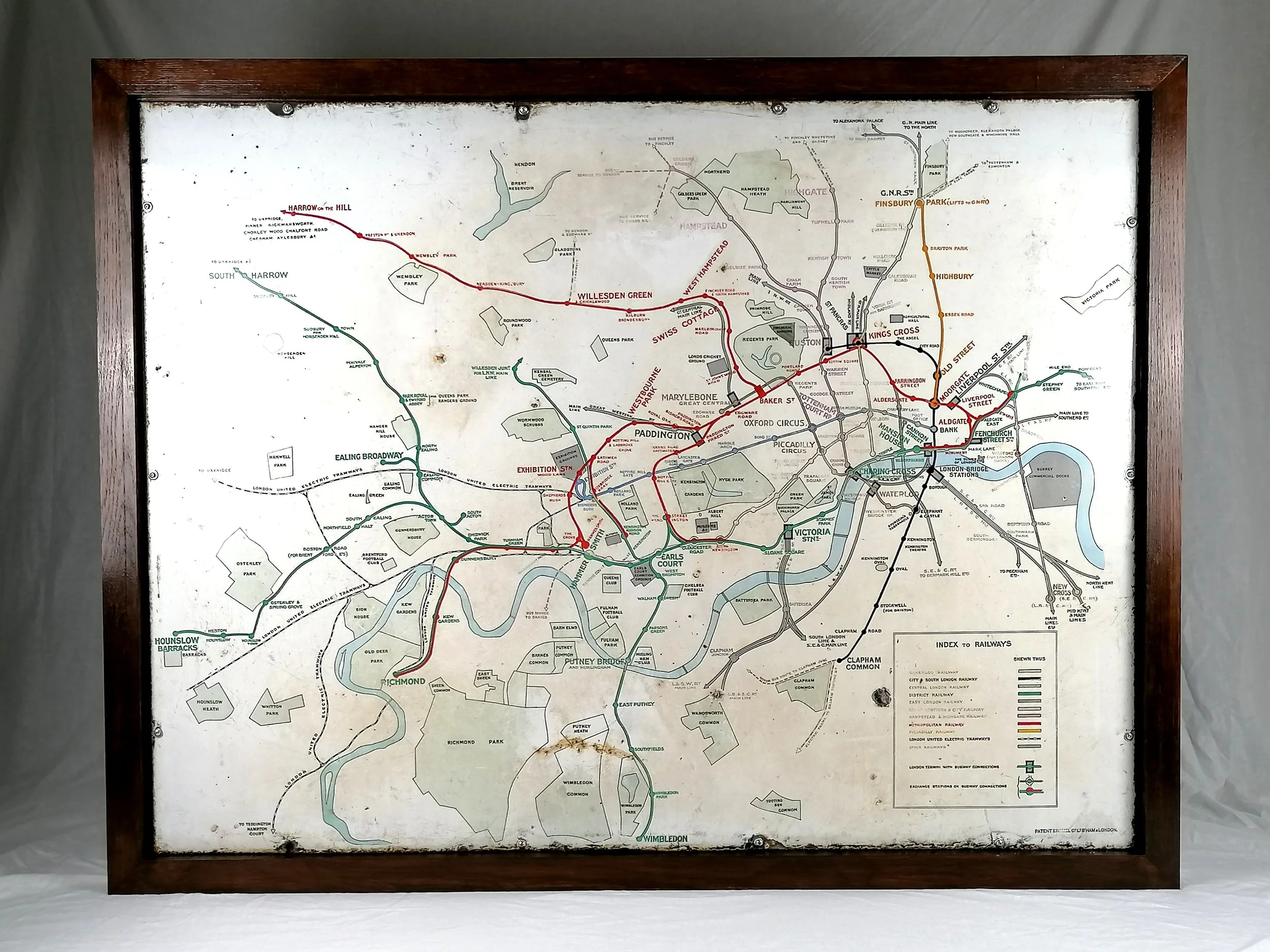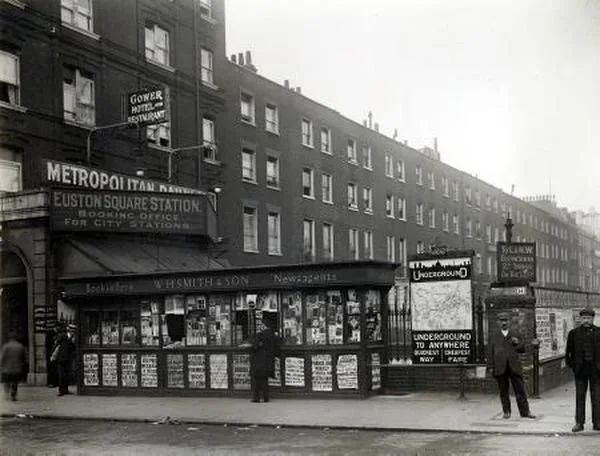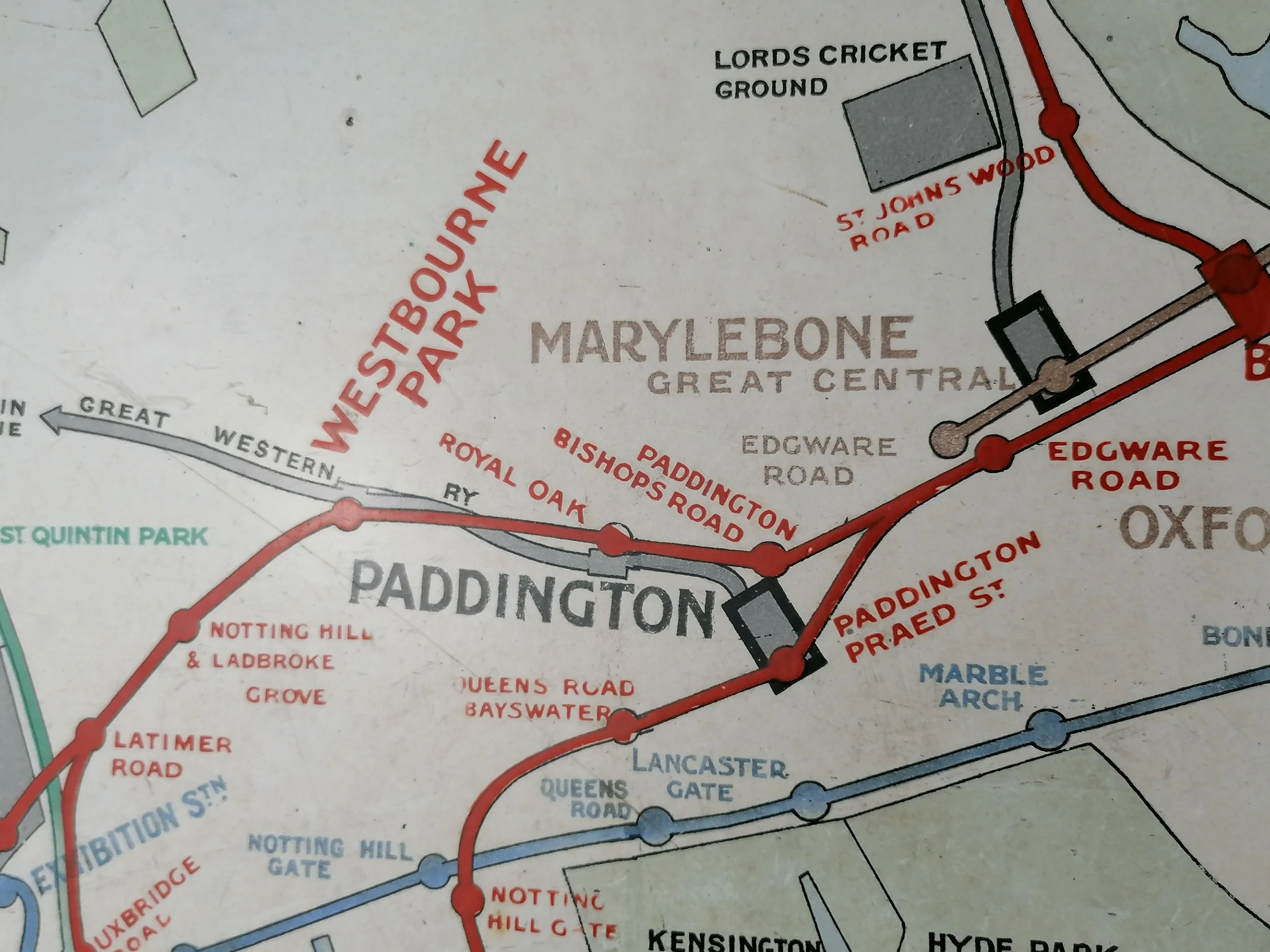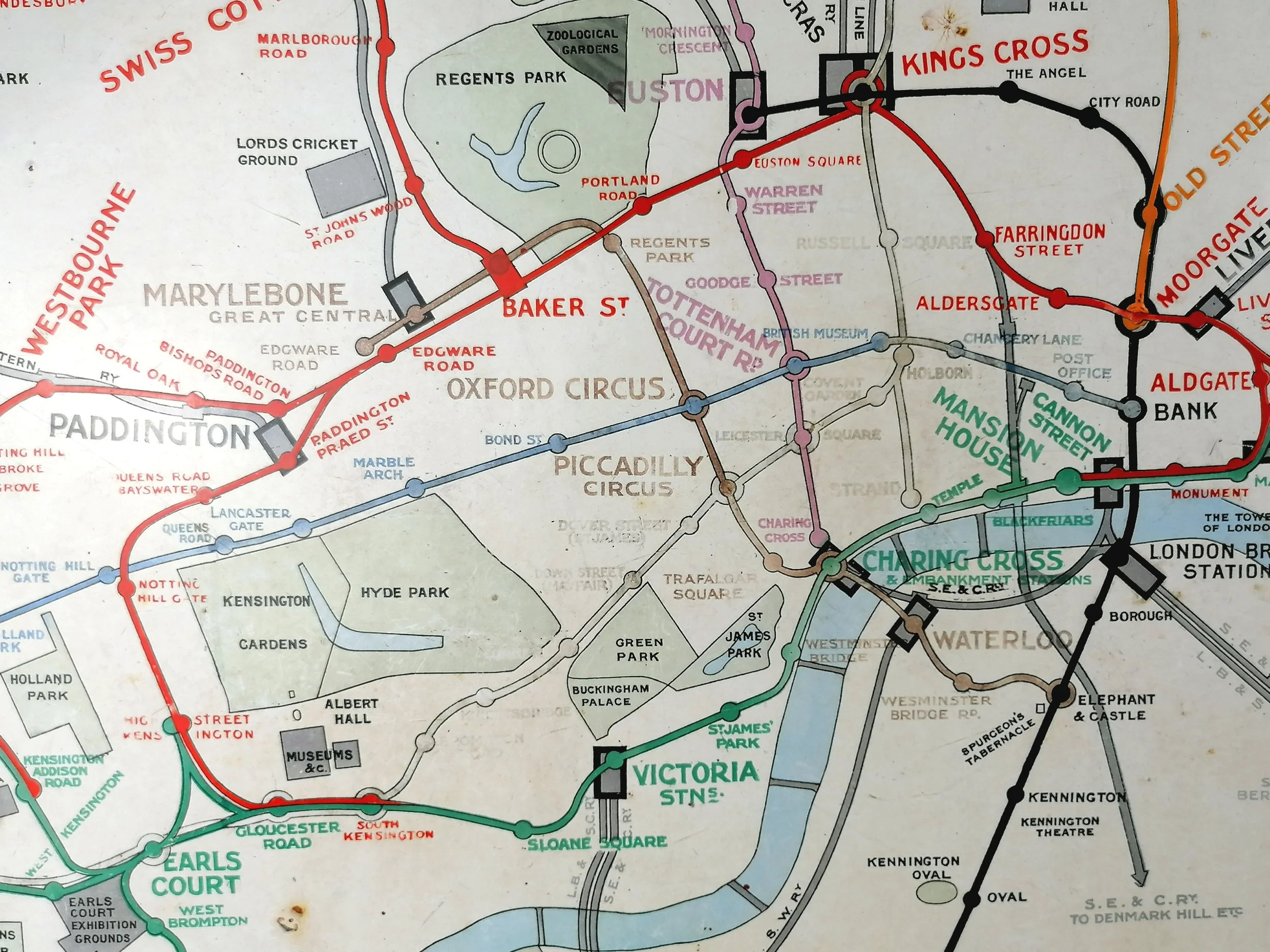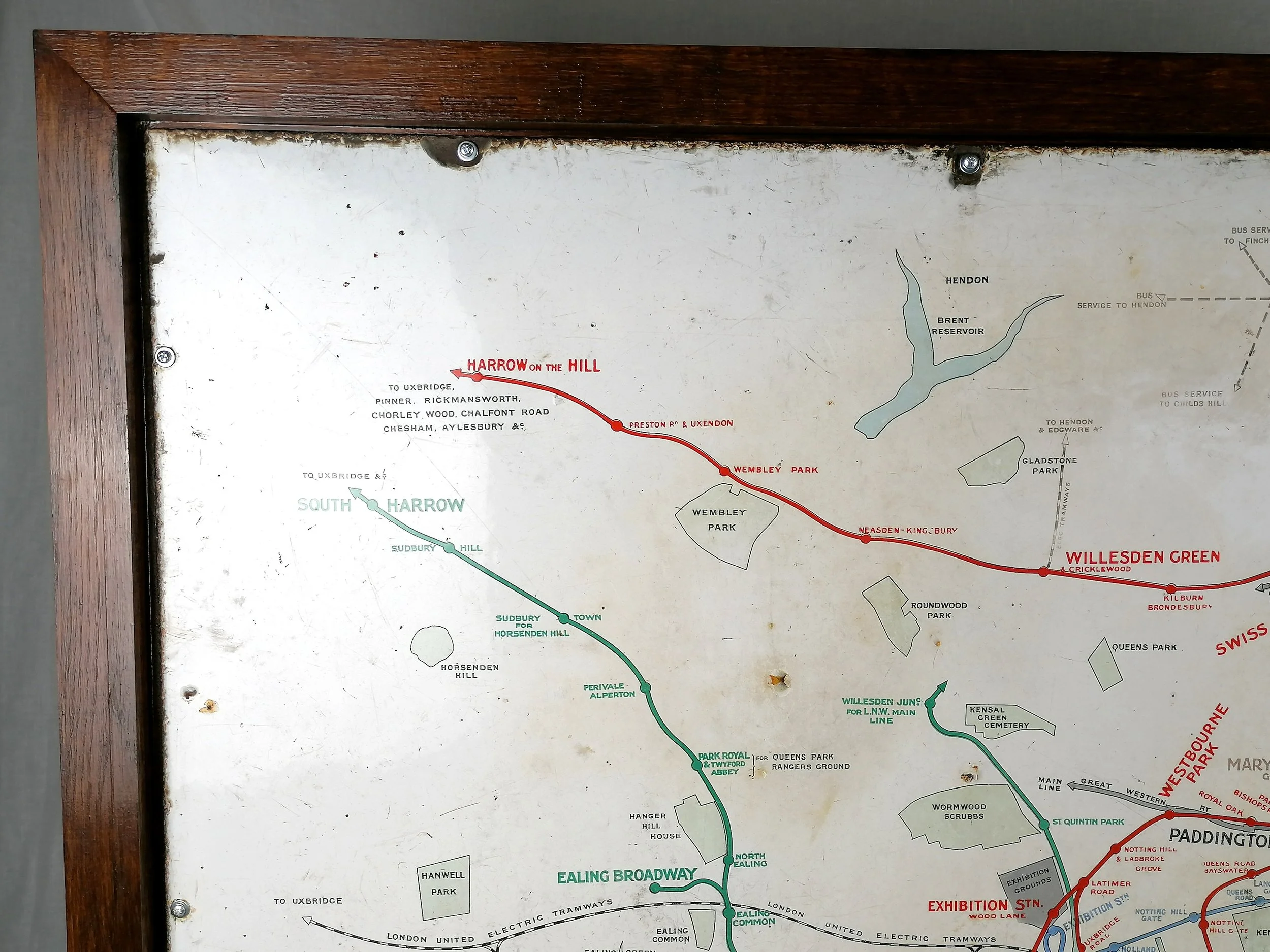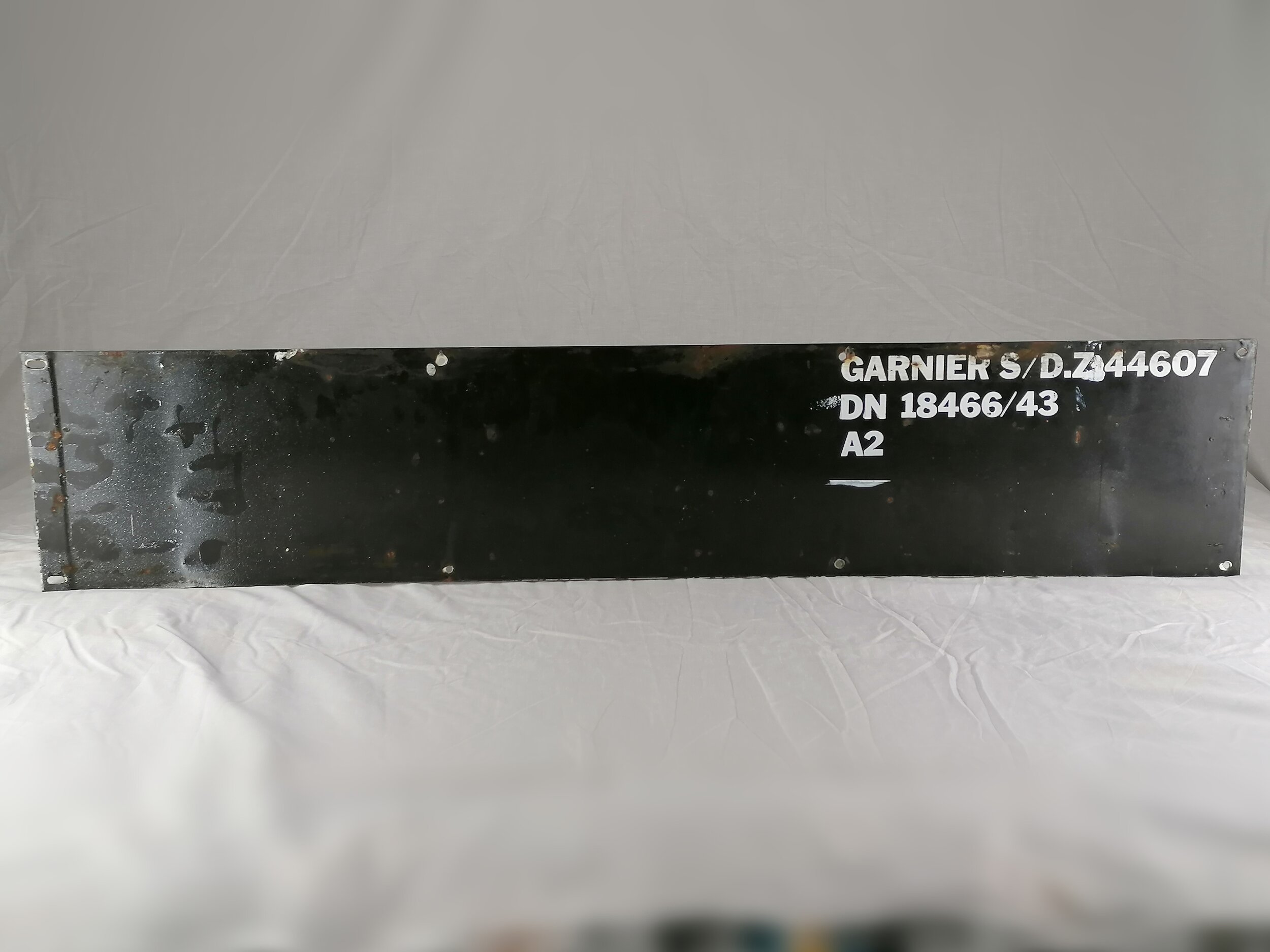1950s London Street Sign - Jermyn Street SW1 - City of Westminster
Jermyn Street SW1 - City of Westminster
Circa 1950s. Steel and vitreous enamel street sign. . Produced for the City of Westminster. 92cm x 66cm x Condition: Excellent in-situ condition; mounting holes around edges for installation. Some marks and chips consistent with being in-situ.
Jermyn Street is located the heart of Mayfair, Westminster, London. It is to the south of, parallel, and adjacent to Piccadilly. The street is home to London’s finest men’s tailors, shirt makers, suppliers of leather goods, food and wine merchants, restaurants, hotels and art galleries.
This original vitreous enamel sign can be dated approximately to mid-century, after the Ministry of Transport Standard typeface was issued (1933). Due to the street numbers shown on this large sign, its original location can be pin-pointed. It was located at the western end of Jermyn Street where it meets St James Street, affixed to (what is currently) The Berretta Gallery (see photos of current sign). This building (36 St James’s Street) was built in 1905 to the designs of William Woodward of Southampton Street, Strand.
Many City of Westminster signs were replaced in 1966 when the Government formed the Design Research Unit (DRU), lead by Sir Mischa Black - who designed the modern flanged signs we see today. Fortunately there are still some Victorian, Edwardian and mid-century examples scattered around Westminster.
FREE UK DELIVERY. Non-UK Delivery available, please request a quotation
Jermyn Street SW1 - City of Westminster
Circa 1950s. Steel and vitreous enamel street sign. . Produced for the City of Westminster. 92cm x 66cm x Condition: Excellent in-situ condition; mounting holes around edges for installation. Some marks and chips consistent with being in-situ.
Jermyn Street is located the heart of Mayfair, Westminster, London. It is to the south of, parallel, and adjacent to Piccadilly. The street is home to London’s finest men’s tailors, shirt makers, suppliers of leather goods, food and wine merchants, restaurants, hotels and art galleries.
This original vitreous enamel sign can be dated approximately to mid-century, after the Ministry of Transport Standard typeface was issued (1933). Due to the street numbers shown on this large sign, its original location can be pin-pointed. It was located at the western end of Jermyn Street where it meets St James Street, affixed to (what is currently) The Berretta Gallery (see photos of current sign). This building (36 St James’s Street) was built in 1905 to the designs of William Woodward of Southampton Street, Strand.
Many City of Westminster signs were replaced in 1966 when the Government formed the Design Research Unit (DRU), lead by Sir Mischa Black - who designed the modern flanged signs we see today. Fortunately there are still some Victorian, Edwardian and mid-century examples scattered around Westminster.
FREE UK DELIVERY. Non-UK Delivery available, please request a quotation
Jermyn Street SW1 - City of Westminster
Circa 1950s. Steel and vitreous enamel street sign. . Produced for the City of Westminster. 92cm x 66cm x Condition: Excellent in-situ condition; mounting holes around edges for installation. Some marks and chips consistent with being in-situ.
Jermyn Street is located the heart of Mayfair, Westminster, London. It is to the south of, parallel, and adjacent to Piccadilly. The street is home to London’s finest men’s tailors, shirt makers, suppliers of leather goods, food and wine merchants, restaurants, hotels and art galleries.
This original vitreous enamel sign can be dated approximately to mid-century, after the Ministry of Transport Standard typeface was issued (1933). Due to the street numbers shown on this large sign, its original location can be pin-pointed. It was located at the western end of Jermyn Street where it meets St James Street, affixed to (what is currently) The Berretta Gallery (see photos of current sign). This building (36 St James’s Street) was built in 1905 to the designs of William Woodward of Southampton Street, Strand.
Many City of Westminster signs were replaced in 1966 when the Government formed the Design Research Unit (DRU), lead by Sir Mischa Black - who designed the modern flanged signs we see today. Fortunately there are still some Victorian, Edwardian and mid-century examples scattered around Westminster.
FREE UK DELIVERY. Non-UK Delivery available, please request a quotation











